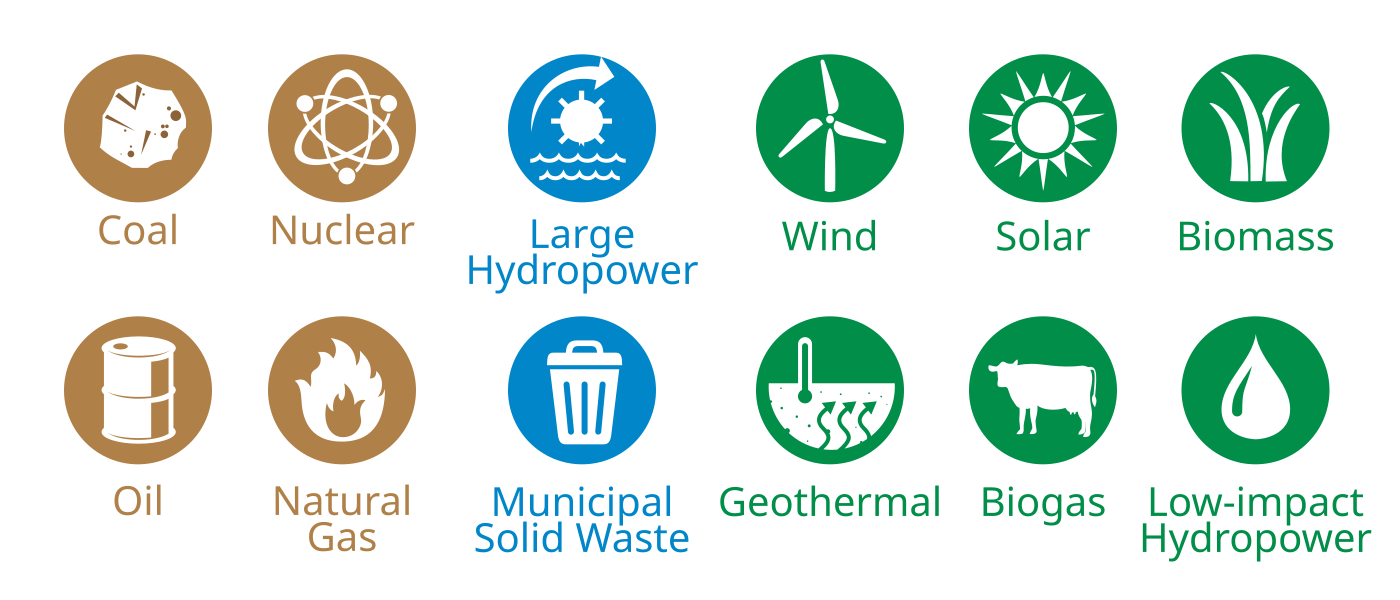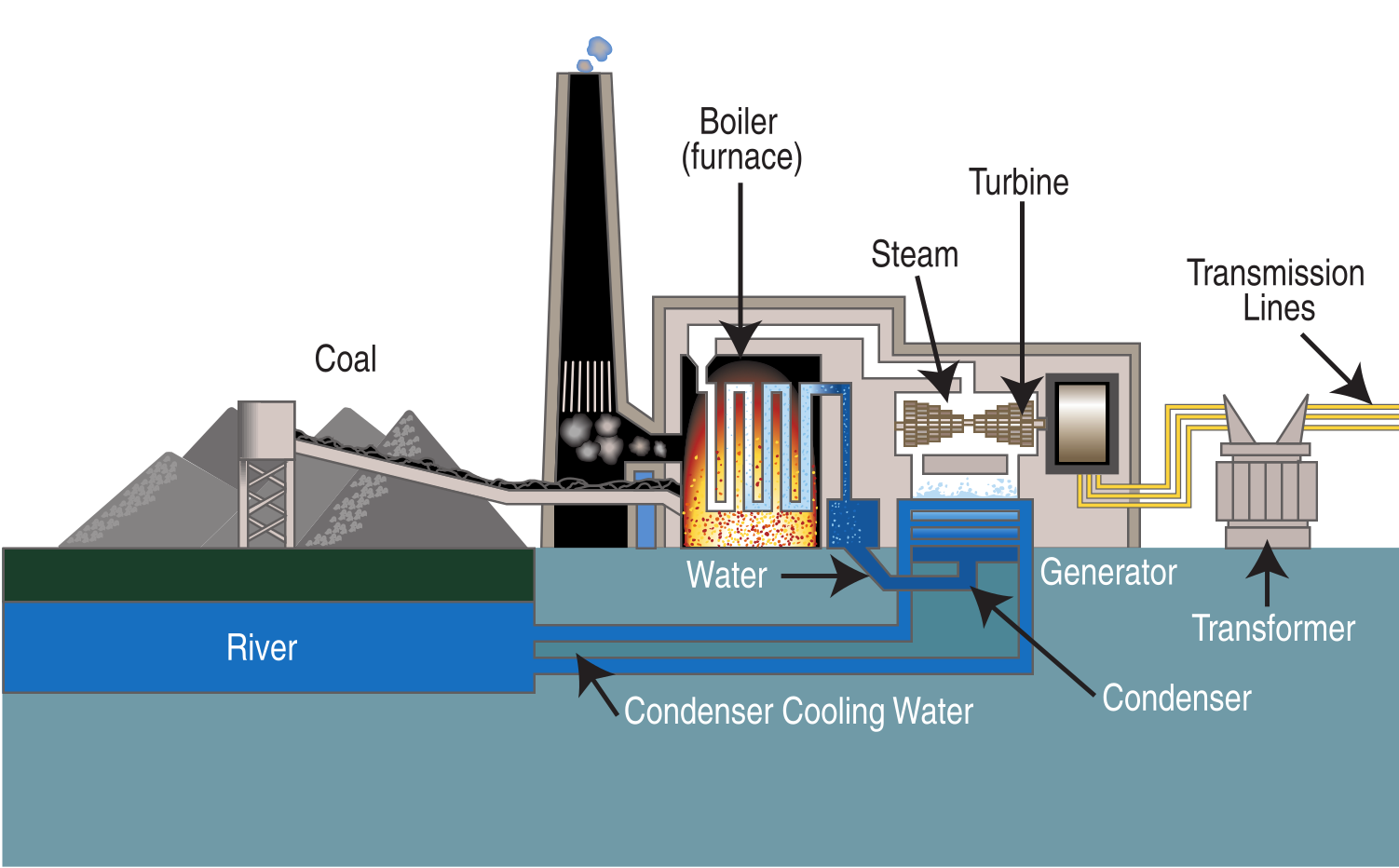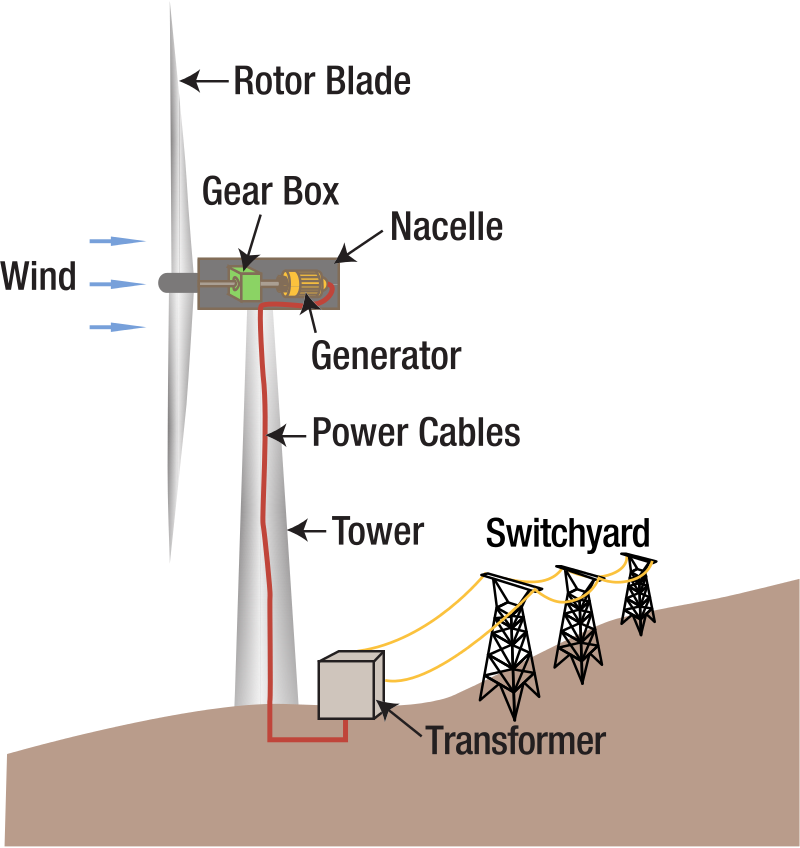IB Syllabus focus:
‘Renewable (wind, solar, tidal, wood, geothermal, hydro) and non-renewable (fossil, nuclear) sources mainly supply electricity.’
Energy underpins all human activity, shaping societies and ecosystems. Understanding renewable and non-renewable energy sources and their conversions is essential for analysing sustainability and global environmental systems.

This infographic groups renewable and non-renewable energy sources that are commonly converted into electricity, aligning with IB terminology. It includes minor extra categorisation beyond the syllabus to clarify context. Source.
Energy Sources Overview
Renewable Energy Sources
Renewable resources are those that are replenished naturally on human timescales. They provide continuous flows of energy that, if managed sustainably, are not depleted.
Solar energy: Harnesses sunlight using photovoltaic cells or concentrated solar power.
Wind energy: Converts kinetic energy of moving air into electricity via turbines.
Tidal energy: Utilises predictable ocean tides to generate power.
Geothermal energy: Draws heat from beneath Earth’s crust for electricity or heating.
Hydropower: Uses the gravitational potential energy of stored or flowing water to produce electricity.
Wood and biomass: Organic material burned or processed for energy; technically renewable, but sustainability depends on harvest rates and land use.
Renewable Energy: Energy derived from sources that are naturally replenished within a human timescale.
Although renewable, these sources are not impact-free. For instance, hydroelectric dams may flood valleys, altering ecosystems and displacing people.
Non-Renewable Energy Sources
Non-renewable resources are finite on human timescales and diminish with use. They formed over millions of years from geological processes.
Fossil fuels (coal, oil, natural gas): Carbon-based fuels created from ancient biomass; major source of global electricity and emissions.
Nuclear energy: Produced via nuclear fission, where uranium atoms are split, releasing significant energy. While low-carbon in operation, it presents risks of radioactive waste and accidents.
Non-Renewable Energy: Energy derived from finite resources that are consumed faster than they are naturally replenished.
Energy Conversions
Conversion Pathways
All energy sources require conversion processes to transform raw energy into usable forms, often electricity.

This schematic illustrates a thermal electricity pathway from chemical energy in coal to electrical energy via boiler, steam cycle, turbine and generator. It includes operational details beyond the syllabus but clarifies the general conversion sequence. Source.
Solar panels convert light into direct current (DC) electricity.
Wind turbines convert kinetic energy into mechanical rotation, then electricity.

This diagram shows kinetic-to-electrical energy conversion in a wind turbine using blades, a drivetrain and a generator. Some mechanical specifics exceed syllabus scope but support understanding of conversion principles. Source.
Hydropower converts potential energy of water into kinetic energy through turbines.
Fossil fuels undergo combustion to heat water, produce steam, and turn turbines.
Nuclear power uses fission heat to produce steam for turbines.
Geothermal systems channel hot water or steam directly to turbines or heating systems.
Energy Conversion: The process of transforming energy from one form (for example, solar radiation or chemical energy) into another, usually electricity or heat.
Efficiency and Losses
Energy Transformations
In all conversions, energy efficiency varies, and losses occur, usually as waste heat.
Fossil fuel plants typically operate at ~35–40% efficiency.
Nuclear plants reach similar levels but require high safety measures.
Renewables often achieve higher efficiencies; for example, wind turbines can convert ~45% of wind’s kinetic energy.
Efficiency (%) = (Useful Energy Output ÷ Total Energy Input) × 100
Useful Energy Output = Energy retained for intended use (Joules)
Total Energy Input = Total energy supplied (Joules)
High efficiency reduces resource use and environmental impacts, making it a key factor in sustainable management.
Characteristics of Renewable and Non-Renewable Sources
Advantages of Renewable Sources
Lower carbon emissions during operation
Long-term availability
Energy security through domestic supply
Reduced air pollution
Challenges of Renewable Sources
Intermittency (solar and wind depend on conditions)
High initial infrastructure costs
Geographic limitations (e.g., geothermal requires tectonic activity)
Advantages of Non-Renewable Sources
High energy density and reliability
Existing global infrastructure
Provides base-load electricity supply
Challenges of Non-Renewable Sources
Greenhouse gas emissions drive climate change
Finite and unsustainable
Pollution risks (oil spills, air quality degradation, radioactive waste)
Global Relevance
Most electricity worldwide is currently supplied by fossil fuels and nuclear power, making non-renewables dominant. However, renewables are rapidly expanding due to policy incentives, falling costs, and environmental concerns. Understanding their conversions is essential to evaluate long-term energy security and sustainability.
FAQ
Primary energy sources are raw forms found in nature such as coal, sunlight, or wind. They require conversion to become usable.
Secondary energy sources, like electricity or refined fuels, are created from primary sources through conversion processes. Electricity, for example, is generated by transforming energy from coal, wind, or solar into a form that can be transmitted and used by society.
Electricity does not occur naturally in usable amounts; it must be generated from other sources.
Its value lies in versatility: it can power homes, transport, and industry. Since it requires transformation of another energy source (like solar radiation or chemical energy in fossil fuels), it is categorised as secondary.
Intermittency refers to the irregular availability of some renewable resources.
Solar depends on sunlight, so night-time and cloudy conditions reduce output.
Wind varies with atmospheric patterns, making supply inconsistent.
These fluctuations complicate electricity generation because supply may not always match demand, highlighting the need for storage and grid management solutions.
Energy density measures how much energy is stored per unit of resource.
Fossil fuels and nuclear energy have high energy densities, meaning smaller amounts produce large outputs.
Renewables like wind and solar have lower densities, often requiring larger land areas or more infrastructure.
This difference influences investment, transport, and the feasibility of replacing high-density non-renewables with low-density alternatives.
Whenever energy is converted, some is lost as waste heat or inefficiency.
Fossil fuel plants typically waste more energy than wind or solar systems.
The greater the losses, the more resources must be extracted to meet demand.
Reducing losses through improved technologies directly improves sustainability by lowering environmental impacts and conserving resources.
Practice Questions
Question 1 (2 marks)
Define the term renewable energy source and give one example.
Mark scheme:
1 mark for correct definition: energy derived from sources that are naturally replenished on human timescales.
1 mark for a valid example (e.g., solar, wind, hydropower, tidal, geothermal, biomass).
Question 2 (5 marks)
Explain how energy is converted from both a renewable and a non-renewable source into electricity. Refer to specific processes in your answer.
Mark scheme:
1 mark for correctly describing conversion of a renewable source (e.g., wind turbines convert kinetic energy of air into mechanical rotation then electricity).
1 mark for identifying the form of energy initially harnessed in the renewable example (e.g., kinetic energy of moving air, radiant energy of sunlight, potential energy of water).
1 mark for correctly describing conversion of a non-renewable source (e.g., coal combustion produces heat to generate steam, which turns turbines).
1 mark for identifying the form of energy initially harnessed in the non-renewable example (e.g., chemical energy in fossil fuels, nuclear energy from fission).
1 mark for making explicit reference to electricity as the final output in both cases.

